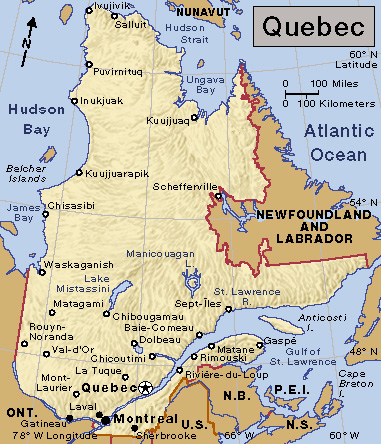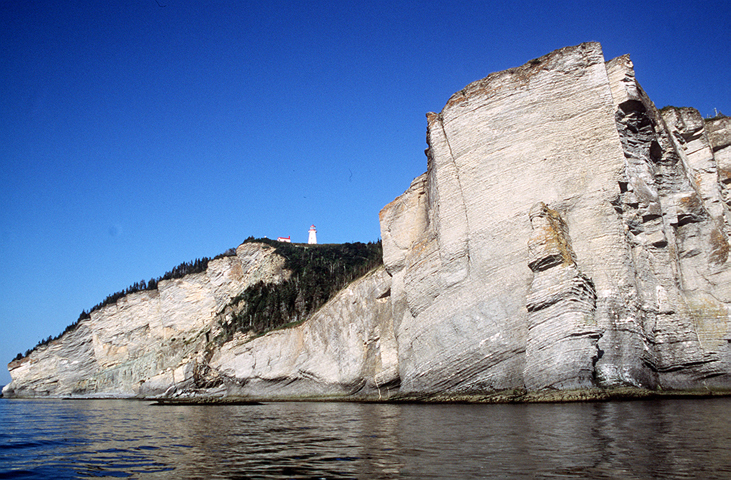Gulf of Saint Lawrence is a deep arm of the Atlantic Ocean, and the largest gulf on the North American coast, except for the Gulf of Mexico. The Gulf of St. Lawrence is partly bordered by Newfoundland on the east, and by Nova Scotia and New Brunswick on the south. It washes the eastern shores of Quebec. The gulf is the outlet of the St. Lawrence River and the Great Lakes, which are the chief highways of trade for eastern Canada and the northern United States.

Since the opening of the deepened St. Lawrence Seaway in 1959, large oceangoing vessels have been able to sail from the Gulf of St. Lawrence to the farthest ends of the Great Lakes. The St. Lawrence Seaway makes the gulf the gateway to the transatlantic trade of the North American interior. The gulf enters the Atlantic by two channels. Cabot Strait, the larger of the channels, extends for over 60 miles (97 kilometers) between Cape Breton and Newfoundland. The Strait of Belle Isle lies between Labrador and Newfoundland.
Telegraph cables cross the Gulf of St. Lawrence, and many steamers sail between Quebec and the Atlantic Provinces. The tides are low, but the changing currents, dense fogs, and floating ice often make shipping dangerous. Prince Edward Island is in the south end of the gulf. Anticosti Island is near the mouth of the St. Lawrence River. Smaller islands lie in the southern part of the gulf and along the northern shores.

Both the Gulf of St. Lawrence and the St. Lawrence River were discovered by Jacques Cartier. On his second trip, on Aug. 10, 1535, Cartier entered a bay on the north coast of the gulf. It was the feast day of Saint Lawrence, and he called the bay the Baye St. Laurens. This name was gradually applied to the gulf and river.
